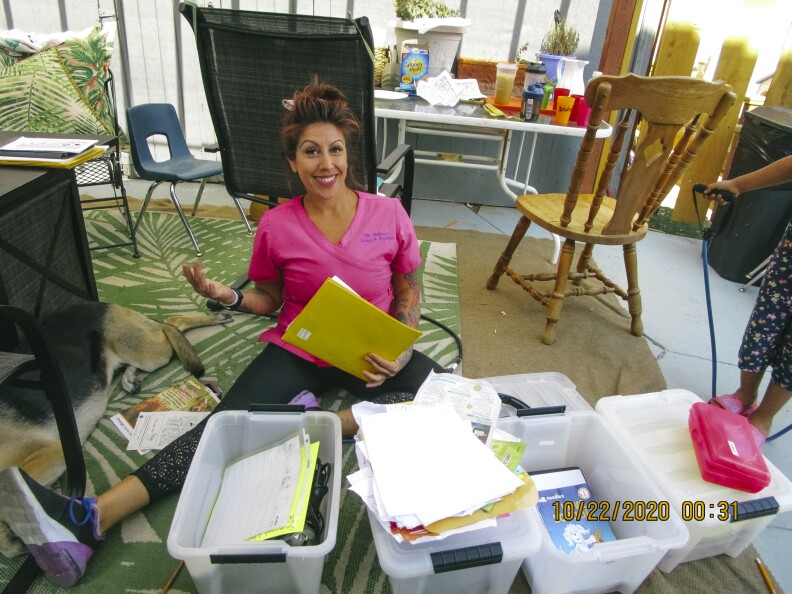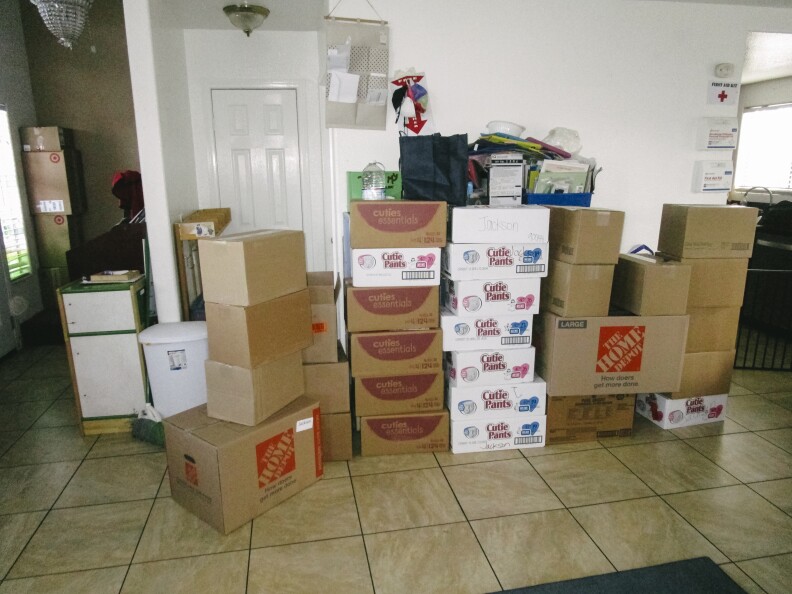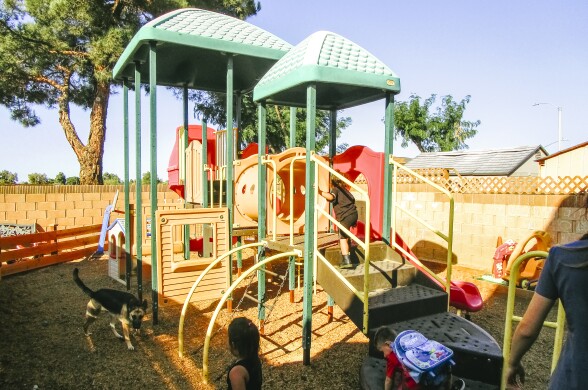-
We gave cameras to 12 Southern California child care providers, educators and caregivers and asked them to document their lives starting in the summer of 2020.
-
Join a live virtual event on June 17 and see the photos in real life at a series of photography installations throughout the region.
The pandemic highlighted the essential work of California’s child care providers, but the reality is that the state’s supply of available child care and the number of providers have been shrinking for years.
Statewide, licensed child care is available to a quarter of families; in Los Angeles County, it’s 22% of families, according to nonprofit Children Now.

Experts have long pointed to the low wages as one reason the state’s early care and education workforce is shrinking, even as parents struggle to find care for their kids.
While individual child care arrangements vary, the median wage for California’s child care workers is $13.43 an hour.
“If you’re in the profession, you’re there for the kids, for the passion that you love to teach, not for the money,” says Ruth Flores, an Early Head Start teacher who works with 2- and 3-year-olds in Mid-City.

A professional-grade jungle gym occupies the majority of Yvonne Cottage’s Lancaster backyard. She spends $500-$600 a week on groceries and takes the kids in her family child care program on an annual camping trip, at no cost to the working-class parents she serves.
“We’re here to provide whatever it is that that child needs, regardless of whether we get compensated,” Yvonne says.
Her center’s revenue comes from parents who can pay out of pocket, and the state, which pays for child care for some low-income families through a medley of subsidy programs.
-
Share a photo and your story with the hashtag #childcareunfiltered. We may even feature some of your community stories on LAist throughout the summer.
California politicians set those rates and haven’t increased them since 2016. For example, an L.A. County family child care provider is paid a maximum of $5.42 an hour for each preschooler who needs full-time monthly care — and that’s only counting 40 hours a week. Many providers LAist has spoken with say they often provide additional hours of care for families.
“It’s not that there aren’t people out there saying we need to raise wages for educators, and educators themselves saying this,” says Caitlin McLean, a senior research specialist at UC Berkeley’s Center for the Study of Child Care Employment. “It’s that there’s been a lack of political will to invest the money.”
Gov. Gavin Newsom did not increase rates for child care providers who serve families in subsidy programs in the May budget revision, but there's a proposal in the legislature to do so.

Multiple child care providers who documented their lives in photos for this project pay themselves a minimal salary, spending most of their income on essentials like rent, utilities, and food.
“I’d love to say that I’m able to save money for retirement, but I can’t,” Yvonne says. “I’ve tried. I’ve tried.”
She’s also put off purchasing a hearing aid, despite finding out a few years ago that she’s partially deaf.
“‘This isn’t a charity,’” Yvonne’s husband, Mike, who she calls the CEO, tells her.
“I get that,” she says. “But at the end of the day, if we’re not giving the most that we can, then you know, what are we doing?”

Child care providers have long operated on thin margins.
The pandemic made it cost more to operate child care. Prices for cleaning supplies skyrocketed ($20 cans of Lysol, anyone?) and enrollment was down. Many parents were too worried to bring in their kids, and public safety guidelines limited the number of students who could attend.
A group of child care nonprofits surveyed Los Angeles providers last fall, and half reported their revenue wasn’t enough to cover monthly costs, citing low enrollment and the cost of cleaning supplies, among other factors.

Some were unable to weather the crisis: In Los Angeles County, the number of licensed child care centers dropped 36% since the start of the pandemic; the number of available family child care homes dropped by 10%.
The providers who took photos for LAist had to string together funding from a hodgepodge of sources to stay afloat.
Several said California’s decision to continue paying providers a fee for families enrolled in subsidy programs, even when these kids didn’t show up, or the programs had to close temporarily, created a critical source of income.
Other providers successfully applied for federal COVID-19 relief programs — but this is a rarity. The Bipartisan Policy Center analyzed Paycheck Protection Program recipients and found that fewer than 7% of more than 670,000 child care businesses nationally received a loan.
All in all, these programs are life preservers, a temporary reprieve. They don’t fix the catastrophic leaks flooding an early childhood system that faced challenges before the pandemic.

High-quality care costs more than any one source provides right now — whether that’s parents, philanthropy, or the government.
And yes, that includes the average of $956 a month in California that families pay for preschool (the rates are even higher for younger children) while many providers make poverty-level wages.
The state’s preschool teachers make a median wage of $16.83 an hour, compared to an elementary school teacher’s $48.09 an hour.
“Educators themselves are subsidizing the system, essentially, with their low wages,” says UC Berkeley’s McLean.

A Center for the Study of Child Care Employment report found that almost half of California child care workers’ families participate in public assistance programs like Medi-Cal and food stamps.
Even across overall low wages, there are disparities. On average, Black early educators make 78 cents less per hour than their white peers, according to the Center.

“These poor working conditions for educators are not inevitable,” McLean says. “They are a product of all the choices that we have made in this country and in the state that we don’t have to continue to make going forward.”
Advocates are eyeing billions in federal coronavirus relief funding dedicated to child care, and a union of select providers formed last year is in the midst of negotiating its first labor contract with the state.

The help can’t come soon enough for providers who put the needs of the communities they care for above their own.
La Habra preschool director Manoja Weerakoon hasn’t increased tuition since 2014. She says the families can’t afford it.
“Right now I’m lost,” Manoja says. “I'm just taking one day at a time. Let’s see how it goes. Let’s see how it goes. And so we’ll keep our doors open.”

-
The hundreds of thousands of students across 23 campuses won't have classes.
-
Over 100 students from Cal Poly Pomona and Cal Poly San Luis Obispo learned life-changing lessons (and maybe even burnished their career prospects).
-
The lawsuit was announced Monday by State Attorney General Rob Bonta.
-
Say goodbye to the old FAFSA and hello to what we all hope is a simpler, friendlier version.
-
The union that represents school support staff in Los Angeles Unified School District has reached a tentative agreement with district leadership to increase wages by 30% and provide health care to more members.
-
Pressed by the state legislature, the California State University system is making it easier for students who want to transfer in from community colleges.


















